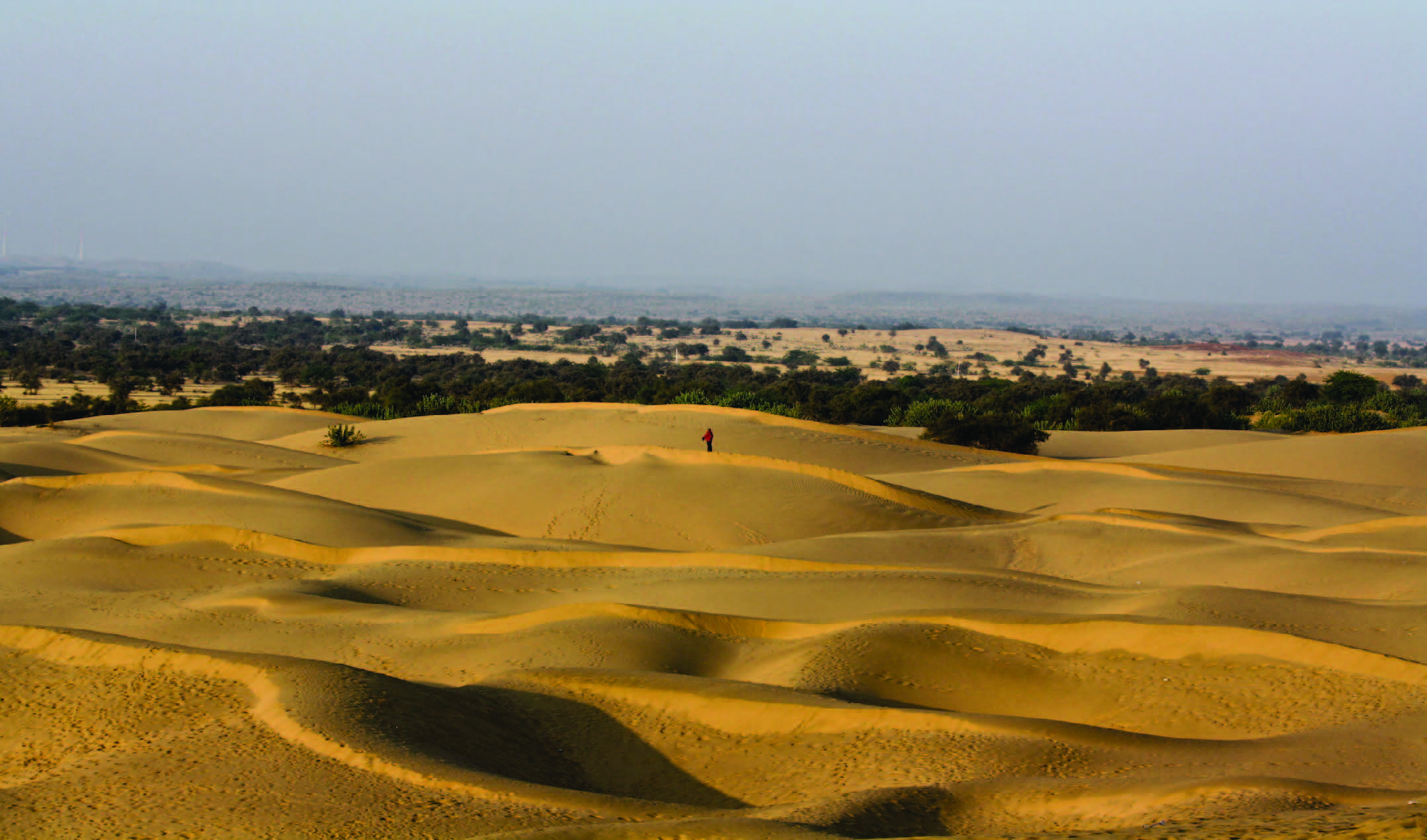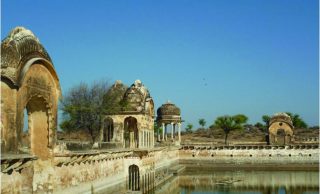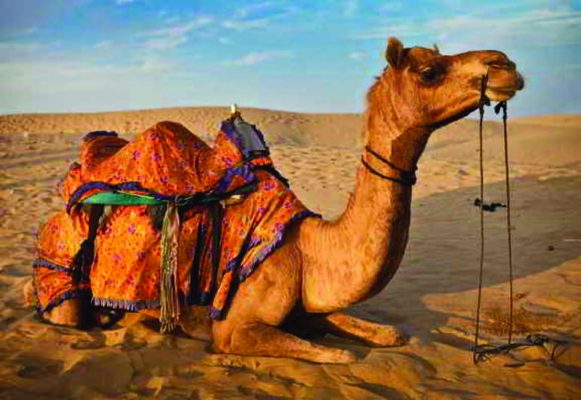
Churu is a town in the desert region of Rajasthan state of India. It lies in the Thar Desert. The city of Churu was founded in 1620 by a Jat chieftain Churru. It was part of Jangladesh prior to annexation by Rathores.
It is famous for the shifting sand dunes of the Thar Desert and beautiful grand havelis with marvelous fresco paintings, namely Kanhaiya lal Bagla ki Haweli and Surana Haweli, with hundreds of small windows. It also has some fine Chhatris. Near the town is a religious seat of the Nath sect of Sadhus where there are life-size Marble statue of their deities and a place for prayers. There stands a Dharam Stup, a symbol of religious equality. At the centre of the town is a fort built about 400 years ago.
Black Buck Santuary
Talchhapar Sanctuary, situated in Churu is famous for endangered black-buck. Other wild animals found in the sanctuary are chinkara, fox, juangle cat, rojra along with many resident and migratory birds. It lies on the way of migratory pass of many birds and therefore it is also popular with bird lovers. Talchhapar, actually a flat saline depression, has a unique ecosystem.
Talchhapar area was a game reservoir for the erstwhile Maharaja of Bikaner State and was declared a reserved area for the protection of wild animals and birds in the year 1962. Total area of Talchhapar Sanctuary is 719 hectare. The sanctuary area is mostly covered by grasses with a very few and sparse trees of Khejri, Salvadora, Ber, Ker and Neem. Main grasses found in the area are Sewan, Doob, Dhaman Lampla, Lana and Moth etc. The area gives a lush green look during rainy season but again dries up during summer season.
 Chhatries (Cenotaph)
Chhatries (Cenotaph)
Churu has some good memorial domes, mostly raised to rich merchants, north of the town. Historically the most significant is ‘Aath Kambh Chhatri’ (Eight Pillar Dome) west of the vegetable market. Built in 1776 on a Rajput’s cremation site. Its base has been virtually buried by windblown sand. The interior is covered with murals, one detail depicting an early European mercenary on foot, bearing a musket. Further north are chhatris of the Mantri , Bagla and Lohia merchant families.
Dudhwa Khara
Just 36 kms from Churu It is an historical village which lies on Thar desert. The village has enticing topography and have huge beautifully designed havelis. One can enjoy the rural life and camel safaris in the village.
 Gogaji
Gogaji
Gogaji also known as Gugga is a folk deity of Rajasthan state in India. He is an eminent warrior-hero of the region. Hindus and Muslims alike honor him. He is also venerated as a saint and even as ‘snake-god’. He is known as Goga among the Hindus and Jahar Peer among the Muslims. Gogaji is popular as a snake-god and almost every village in Rajasthan has a Than (sacred place) dedicated to him.Rabari community in Gujarat and Rajasthan is great believer in Gogaji.
It is believed that Gogaji went into samadhi at Gogamedi. Thousands of devotees gather to pay homage at this memorial annually in the month of Bhadrapada during the Gogaji fair, which lasts for 3 days.The fair is held from the ninth day of the dark half of Bhadrapada (Goga Navami) to the eleventh day of the dark half of the same month.
Kanhaiyalal Bagla Haveli
Just south of the main bazaar, this haveli built around 1880 boasts the finest frieze in all the Shekhawati region. It illustrates Dhola and Maru on a camel fleeing the wicked Umra-Sumra, Sassi and Punu side by side on horseback, two set of lovers from folk tales. To the south-west is a mosque, Jama Masjid, and a little Muslim haveli decorated with non-figurative work.
Kothari and Surana Haveli
A group of handsome painted havelis built by two prominent Oswal Jain merchant families, the Kothari and Surana clans. Amongst them are ‘Malji Ka Kamra’ (Malji’s Haveli), an exotic stucco extravagaza built by Malaji Kothari around 1925 and the massive Surana Double Haveli, said to boast 1111 windows and doors built in the 1870s.
Mantri Haveli
The Mantri Haveli is one of the most beautifully designed Havelis in India. The Mantri Haveli, Churu reflects the rich grandeur and splendor of the Rajput era. One of the major tourist attractions of Rajasthan, the Mantri Haveli, Churu attracts tourists from all over to Rajasthan. The Mantri Haveli is truly a beautiful symbol of Rajput grandeur and beauty. In the Mantri Haveli, Churu you can get to see beautiful paintings and exquisite mirror work that brings travelers from all over.
Mantri Haveli, Churu was built in the 18th century and is completely covered with paintings. From exotic images to beautiful and unique silhouettes the paintings are simply a class apart. One of the oldest Havelis in Churu, the Mantri Haveli is an art gallery. Dedicated to one of the ministers of the royal family the Mantri Haveli in Churu attracts tourists for its beauty and uniqueness.
From floral swirls, motifs, and excellent mirror work, to balconies and alcoves, the exquisite artistry of the Rajputs are explicitly reflected in its artwork as well as architecture. From lavish ornamentation, spacious courtyards to sprawling areas, the Mantri Haveli, Churu attracts people from all over. However the front facade is completely worn out and you can feel the medieval aura and ambience once you enter inside the Mantri Haveli.




Be the first to comment